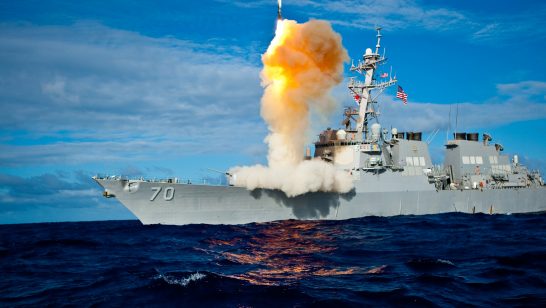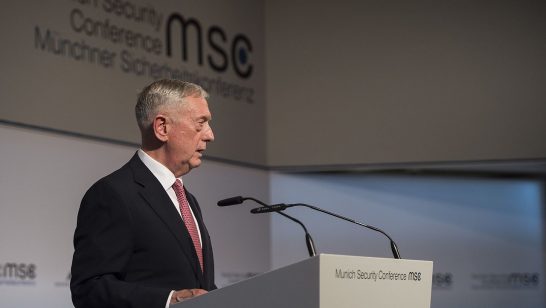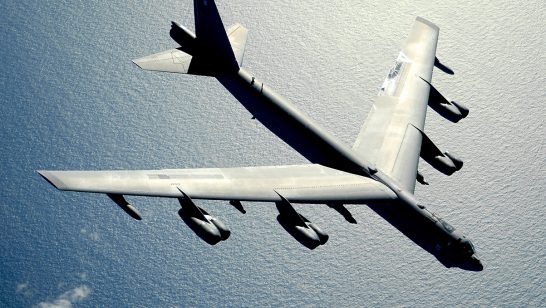
Today there are two questions about the Intermediate Nuclear Forces (INF) treaty: is it worth saving, and if so, can it be saved? (1)
Mikhail Gorbachev, the last leader of the Soviet Union, and one of the architects of the treaty, thinks so. Earlier this month Gorbachev called for President Vladimir Putin and US President Donald Trump to work together to rescue the three-decade old treaty. For Gorbachev saving the INF would: “send a powerful signal to the world that the two biggest nuclear powers are aware of their responsibility and take their obligations seriously.”
Putin has long been less enamoured of the INF. He reportedly told the Valdai Club the treaty was “unilateral disarmament on the part of the Soviet Union”.
As far back as 2007 the then Defence Minister Sergey Ivanov was arguing that the treaty was disadvantageous to Russia. While the deal did remove five types of Soviet ballistic missile (SS-4 Sandal, SS-5 Skean, SS-12 Scaleboard, SS-20 Saber, SS-23 Spider) and the land attack cruise missile, the SSC-X-4 Slingshot, it also removed from Europe the US Pershing II ballistic missile and the BGM-109G Gryphon land-based version of the Tomahawk family of cruise missiles. The accuracy of the Pershing II missile when coupled with a short flight-time to its target was of particular concern to the Soviets.
Why is the treaty now in trouble? Moscow’s animus to the agreement has become increasingly manifest over the past ten years or so, in part as means of showing its displeasure with the US and NATO, not least of all with respect to missile defence. It has alleged various US breaches of the INF, including with the Aegis Ashore system – the vertical launch cells have the notional ability to house the Tomahawk missile as well as the intended SM-3 interceptor – and with some classes of unmanned aerial vehicles.
While these accusations are tendentious, it is Washington that makes the more serious and sustained allegation: Moscow has developed, tested and now deployed a dual-capable ground-launched cruise missile that is a clear contravention of the INF Treaty. Russia flatly denies any violation. The treaty bars the US and what is now Russia from testing and deploying ground-launched ballistic and cruise missiles with ranges between 500 and 5,500km.
Since 2014 the US has made public allegations of the breach. The administration however has so far been reluctant to release any detailed intelligence in relation to its accusation. Concern appears to focus on a system designated the SSC-8 by the US. This is most likely a version of the Novator 3M14 (SS-N-30) ship and submarine-launched land attack missile now in service with the Russian Navy. This weapon probably has an operational range in excess of 2,500km. The Yekaterinburg-based Novator – now part of the Almaz-Antey defence company – was responsible for development in the 1970s and early 1980s of the 3M10 Granat (SS-N-21 Sampson) nuclear-armed cruise missile on which the SSC-X-4 Slingshot was based.
Is the INF worth saving?
There are two reasons why the US and European NATO members should try to sustain the agreement, irrespective of the alleged breach. In the short term these ought to take precedence over simply trying to bring Moscow into compliance. One is symbolic, the other practical.
First, relations between Russia, Europe and the US are fractious. A number of arms control arrangements –including the Anti-Ballistic Missile Treaty, and the Conventional Forces in Europe agreement – have been abandoned or shelved by one partner or another. In Europe the security environment is arguably at its worst since the early 1980s. However in the midst of this the US and the Soviet Union were able to craft the INF Treaty and sign it in 1987. Attempting to sustain the INF would be a valuable signal of Western intent in an ongoing propaganda war with Moscow.
Second, on a practical level, the INF has for the past 30-years removed a class of ground-launched nuclear delivery systems, the re-introduction of which would be destabilising in the European theatre. Moscow’s alleged introduction, even in small numbers, of a ground-launched nuclear capable cruise missile is concerning, and every effort to halt and reverse this should be made. Any chance of a successful strategy, however, will require diplomacy and flexibility, attributes that do not necessarily describe the current occupant of the White House, or some in Congress.
Can the treaty be saved?
Congressional Republicans are pursuing legislation that would require the US to develop a ground-launched cruise missile (GLCM) if Moscow fails to return to compliance. For Russia to adhere again to the treaty it would have to admit a breach in the first place, and then agree to destroy the offending system. In the current environment this appears unlikely.
Were however the US to go ahead and develop a GLCM – and Russia to continue to deny any breach – it would provide Putin a propaganda victory and a “legitimate” reason to blame the US for the collapse of the INF Treaty. It would also risk splits within the NATO alliance given that many European NATO states would be reluctant to host a US dual-capable ground-launched cruise missile. These splits would merely serve to benefit Moscow.
A symmetric response is one of the poorest options the US could take, and one its European allies should attempt to persuade it to reject. The US and its NATO partners have a range of conventional systems options – including sea and air-launched cruise missiles – the increased deployment of which could discomfit the Russian regime. At the same time an increased focus on cruise missile defence as part of a renewed emphasis on air and missile defence in the Europe would also be of value.
Whilst pursuing such measures, and clearly linking them to the alleged Russian INF breach, the U.S. should also aim to engage talks with Moscow to try to identify whether there is any mutually acceptable approach to sustaining – and perhaps revising – the treaty. As Gorbachev suggested, it is a worthy goal. The risk is that it may no longer be attainable.
(1) The Intermediate Nuclear Forces (INF) is a bilateral treaty between the United States and Russia foreswearing the testing and deployment of ground based ballistic and cruise missiles with ranges of 500 to 5500km.
The opinions articulated above represent the views of the author(s), and do not necessarily reflect the position of the European Leadership Network or any of its members. The ELN’s aim is to encourage debates that will help develop Europe’s capacity to address the pressing foreign, defence, and security challenges of our time.



